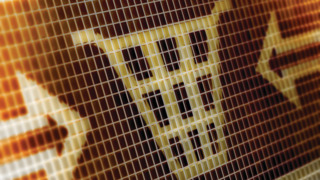The Primary Reason Print Software Gets Thrown Out
Print software gets thrown out by printers primarily because of factors that are 100% in the printer’s control.

“This software doesn’t work for us."
There have only been a few times in my career when I took this comment at face value, meaning I wholeheartedly agreed with the printer. The few times were grossly obvious that the wrong solution was sold into the wrong printer (e.g. a product designed for flexo printing sold to a commercial sheetfed print organization). Oops.
In just about every case, I think about the product the printer is complaining about. Here’s where my head goes:
- How popular is this product?
- What’s its current install base?
- Does its current install base look like this printer or look very different from this printer?
- Is this printer really weird? Doing stuff that makes them really special?
- How long have they “tried” with the print software?
- Can they identify anyone who has been assigned to make this software work?
Software is not something you can simply plug-in like a toaster and start making toast. All software in your business has to be implemented according to your business conditions. Then, after implementation, your process has to change to accommodate the software. Yes, your process has to change because human process changes are so much cheaper than software changes.
Print software (Print MIS, web-to-print, pre-press automation tools) get tossed out of printers primarily because the solution wasn’t fully adopted by the printer. What does full adoption really mean?
- You have someone on your staff actively engaged in building their expertise on the software itself. What can it do today? What’s configurable? How does it work with the other solutions in your business? What’s on the vendor’s roadmap? This is real work that requires real time and effort by folks in your business, and usually those folks are also trying to get jobs out the door every day.
- You have communicated to your team that process changes are required and expected to be followed. The new process has been communicated and there is a way for your employees to provide feedback on how the process can be improved. Nobody gets a new process 100% perfect on the first try, and the people who are in the trenches are the best ones to give you ongoing feedback on how to improve it.
- You have cut off access to those in your organization who would prefer to keep doing it the way they have been doing it. When you leave legacy options open, the laggards in your organization will default back to the status quo. You have to cut off the pathway of staying with old processes so that people get over that uncomfortable hump of doing something new and can get comfortable with the new process as soon as possible. If your team is able to go around the new software with legacy processes, full adoption will never happen.
- The culture of the organization is to see all software as the “vendor’s problem.” You don’t know how to use a piece of software, so it's the vendor’s fault for not providing more training. You don’t understand how to configure your software, so it's the vendor’s fault for not making it easier to figure out. You change a bunch of settings without understanding the repercussions, so it's the vendor's fault for allowing a user to make those changes. Full adoption can’t happen unless the software purchase becomes your baby after you buy it. That means all parts of care and feeding and—most importantly—the time and energy is input so you can really get to know it. The vendor cannot do this for you.
Lots of print software gets bought and then thrown out (along with the investment and the opportunity cost of your time and effort to implement it). The worst thing about this condition is that buying a different piece of print software will not solve it. No software on the market can auto-magically create real ownership in your business, communicate to your team about process changes, shut off your legacy processes or adjust your culture to be more accountable.
You will continue to repeat the expensive process of thinking software shopping will fix your challenges. Shopping is fun, full of potential (the sales process is a gigantic hot air balloon of potential) and pleasant —everyone is so nice to you when you’re thinking of spending a lot of money with them.
Digging in, allocating expensive labor to gain expertise, working through the tedious details of how to optimally configure each pre-press workflow or business process in your MIS—for most this is no fun. This is the hard work of making your print software sing. It is rewarding, but it requires a very different kind of effort than throwing print software out and staying in a perpetual shopping cycle.
